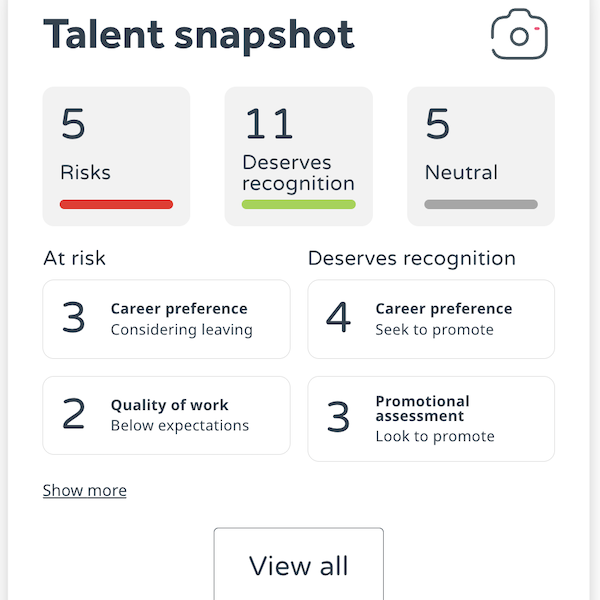Every business leader wants its employees to shine. The financial success and reputation of a company depends on all staff doing their best at work. The million-dollar question is how do employers ensure employees perform at the optimum level? These employee engagement models and theories outline some of the different ways in which employers can boost performance.
It’s not an easy question to answer. Employee engagement is complex. Most employers now realise that getting the most out of employees isn’t simply about pay.
Academics have been researching employee engagement for decades, and there are many employee engagement theories and models that provide a framework for success. Each model has a slightly different approach.
This blog explores some of the theories behind employee engagement and considers how a company might choose what is right for them.
 What is an employee engagement model?
What is an employee engagement model?
An employee engagement model is a blueprint which details how to make an employee feel valued, empowered, and productive in their job. It is the backbone of a company’s culture. It involves the implementation of policies and the right managerial and senior leadership behaviours.
Such policies aim to improve the quality of life at work for an employee, covering everything from general wellbeing to career opportunities. Employee engagement models outline the strategy required to maximise the employee experience, ensure job satisfaction, and build the kind of positive work culture where employees can thrive.
Why do we need employee engagement models?
It is now well accepted that engagement is THE key to unlocking productivity in employees.
There are heaps of employee engagement initiatives a business can implement, but without an overarching plan, successes can be hit and miss. Isolated initiatives aren’t very impactful if they aren’t tied to a wider strategy.
Employee engagement models and theories are helpful for establishing a strategy. Adopting a model that has already been proven is more likely to bring about significant and lasting change and will save a lot of time.
However, simply following a model doesn’t guarantee success. This relies on an organisation’s ability to listen to its employees, something that is easily gleaned through regular employee engagement surveys.
Importantly, a model or theory is a guide, not a rigid set of instructions, so flexibility is key, and a company must decide which of the models is suited most to its business needs.
What are the employee engagement theories and models?
There are numerous employee engagement theories and models and hundreds of successfully proven initiatives. The nuances of a business will determine which model is most suitable. For example, a large manufacturing business may require a different model and employee engagement strategy than say a small FinTech start-up.
Ultimately though, the fundamentals of employee engagement are the same and revolve around these pillars:
- The capacity to engage – training, learning, growth, development, collaboration with colleagues and support from management
- A reason to engage – autonomy, respect, recognition, appreciation
- Freedom to engage – job satisfaction, freedom to be creative and innovate, pride
- Alignment – between the individual and the organisation (this means employees understand and align with the vision and mission of the company)
Maslow, Kahn, and AON-Hewitt are among the most common employee engagement frameworks. Let’s take a closer look at each of them.
 Maslow’s model
Maslow’s model
Most people in business will have heard of Maslow’s hierarchy of needs. It’s as inevitable as the tea break on most business courses and has had a profound influence on the management of employees.
So just to recap. Abraham Maslow introduced his hierarchy of needs in a 1943 paper called “A Theory of Human Motivation.” Maslow’s motivational theory in psychology comprises a five-tier model of human needs.
The theory posits that motivation is the result of attempting to fulfil these five basic needs, which are: physical, safety, social, esteem, and self-actualisation (fulfilment). The more these needs are fulfilled, the more motivated an employee becomes.
The theory determines that without satisfying these needs, a person can’t be fully engaged or happy in their role. On a basic level, employees need job security and a living wage, and they need to be and feel safe in their jobs. Employees also need to feel a sense of camaraderie – to feel a part of something (a sense of belonging), and to feel appreciated. Employees also need to grow, to progress, to be creative and to be able to run with ideas.
None of the needs are more important than others below them in the hierarchy. Employees must be satisfied on all levels to be motivated to perform at their best.
The Kahn Model
Organisational psychologist, William Kahn, was one of the first researchers to identify the concept of employee engagement. In his work he identified three principle dimensions of employee engagement – physical, cognitive and emotional.
Kahn’s Psychological Conditions of Personal Engagement and Disengagement at Work looked at two sets of workers – summer camp counsellors and members of an architecture firm. The study explored the conditions at work in which people engage or disengage.
Kahn found that there were three psychological conditions that enable engagement:
- Meaningfulness: Does an employee find their work meaningful?
- Safety: Does the employee feel safe to express opinions at work without the risk of negative consequences?
- Availability: Does the employee feel mentally and physically able to harness their full self at this moment?
Kahn challenged the existing ideas in business at that time that engagement stemmed from what an employee thought about their work. He argued that engagement came from feelings not thoughts. Kahn said of his theory – “The engagement concept was developed based on the premise that individuals can make real choices about how much of their real, personal selves they would reveal and express in their work.”
Kahn illustrated the cost of disengagement – employees doing just enough to remain employed but offering none of their cognitive or emotional energy to the job. According to Khan’s theory, more effort is only given by employees when they feel safe to be their real selves in their job.
The AON-Hewitt model
The AON-Hewitt model of engagement considers a combination of factors required for optimal performance and productivity. These include rational thought, emotions, intentions, and behaviours The model revolves around six employee engagement drivers (the areas in which employers have most control) and three outcomes.
Drivers are:
- Basics – pay, benefits, job security, work environment, work-life balance
- Work – tasks, accomplishments, empowerment, autonomy, collaboration
- Company practices – diversity and inclusion, communication, talent, staffing, enabling infrastructure
- Brand – reputation, corporate social responsibility, employee value proposition
- Leadership – accessibility, direction
- Performance – career opportunities, learning and development, performance management, people management, rewards and recognition
Engagement outcomes, which are dependent on the success of the drivers, are:
- Say – will say great things about the organisation to colleagues, potential employees, and customers
- Stay – have a sense of belonging and wouldn’t easily leave the organisation
- Strive – motivated to exert effort and succeed at work
So, what next?
WeThrive’s 4C employee engagement model
We’ve spent the last 13 years perfecting the science of people at work with our unique 4C psychological model. It was developed by Piers Bishop, a psychotherapist specialised in Human Needs psychology and member of the Association for Business Psychology with contributions and expertise from GPs, practical psychology and psychotherapy.
WeThrive’s innovative employee engagement survey was developed with an understanding that true engagement comes from meeting the underlying needs of your workforce. The 4C model identifies four areas of working life that impact your people at work:
- Cognitive: What the team have in their head
- Capability: Perception on support and resources
- Connection: The subconscious invisible ‘human stuff’
- Confidence: The conscious ‘feelings’ about work
WeThrive’s intelligent employee engagement surveys help you dig deeper into the conscious and subconscious areas and our smart dashboards deliver instant actionable recommendations to your managers and their people.
Want to learn more? Book a demo to learn how WeThrive can transform your employee engagement strategy today.
 What is an employee engagement model?
What is an employee engagement model? Maslow’s model
Maslow’s model

